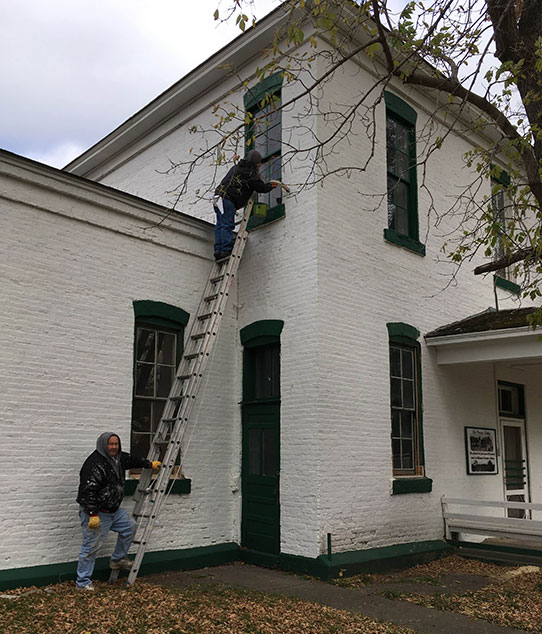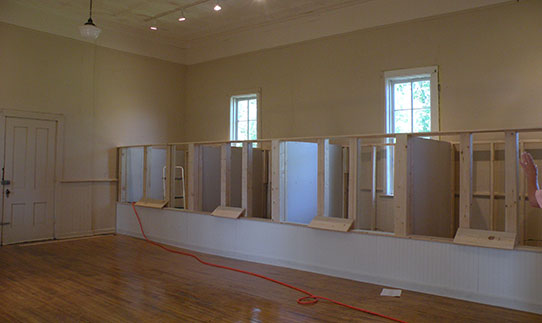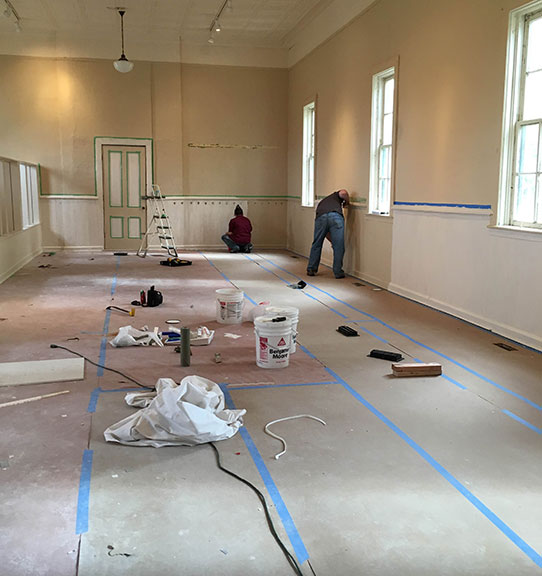Update on hospital/cafeteria restoration at Fort Totten State Historic Site
The past few months have seen many developments on the restoration of the historic hospital/cafeteria at Fort Totten State Historic Site. When we last left off (blog.statemuseum.nd.gov/blog/totten-restoration) contractors were beginning to install a new HVAC system and starting an electrical overhaul. Adding central air and heat to the building was a much needed update to properly house and display the historic collections of the Lake Region Pioneer Daughters.
Contractors began the extensive process of running duct work throughout the basement in the summer of 2016. The stone foundation, built by soldiers almost 150 years ago, is made of solid granite. In two separate places, contractors spent many hours drilling through the walls of the foundation to further the reach of the air flow system. This was a delicate and challenging process.
As the HVAC system installation was underway, the electricians completely rewired the building—running new wires and installing new outlets throughout. The interior was then scraped and painted, the original hardwood floors refinished, and the first floor windows restored.

Contractors paint the exterior of windows that have recently been restored at Fort Totten’s historic hospital/cafeteria.
Most recently, work began on the exhibit “cubes” that will house the Pioneer Daughters collections. Each exhibit space will detail a different theme and part of the collection. The cubes have the flexibility to be changed each season, if desired, and offer greater security and protection to the artifacts on display.

The exhibit “cubes” in the process of being built in the historic hospital/cafeteria at Fort Totten State Historic Site. Each cube will house a different part of the Lake Region Pioneer Daughters collection.
Once the cubes have been completed, work on exhibit development can begin. Throughout the winter, State Historical Society staff will carefully assess the collections and begin the lengthy process of cleaning and preparing artifacts for display. The completed hospital/cafeteria will also tell the story of the different uses of the building throughout its history—detailing its use as frontier military hospital, a tuberculosis preventorium, and a cafeteria for the industrial boarding school for American Indian children.
Learn more about Fort Totten and follow the site on Facebook for more restoration updates.

Site Supervisor Kyle Nelson and Assistant Site Supervisor Lisa Alberts hard at work painting the wainscoting in the hospital/cafeteria at Fort Totten State Historic Site.




